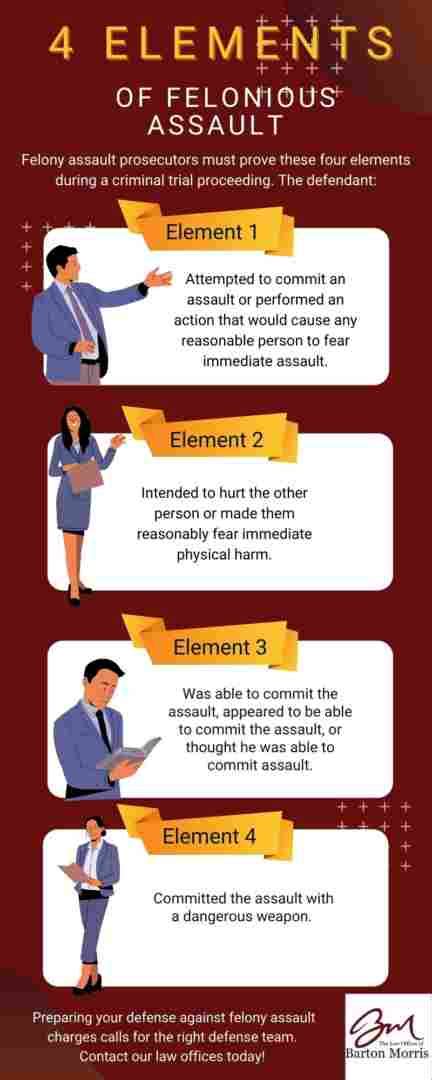Felonious Assault: Evidence, Tactics, and Strategies
Felonious assault, a serious crime involving the intentional infliction of serious bodily harm or injury, requires robust investigation and strategic legal maneuvering. This article delves into the crucial aspects of felonious assault cases, examining the types of evidence used, effective investigative tactics, and winning legal strategies. Understanding these elements is critical for both the prosecution and the defense.
What Constitutes Felonious Assault?
Felonious assault laws vary by jurisdiction, but generally involve an intentional act causing serious bodily injury. This injury goes beyond minor scrapes and bruises; it encompasses significant physical harm requiring medical attention, potential long-term disability, or even death. The intent to cause harm is a key element, though it can be inferred from the actions taken. Aggravating factors, such as the use of a weapon, the victim's vulnerability, or the presence of hate-crime elements, can significantly increase the severity of the charges and potential penalties.
Types of Evidence in Felonious Assault Cases
Gathering compelling evidence is paramount in felonious assault prosecutions. This evidence can be broadly categorized as follows:
1. Physical Evidence:
- Medical Records: Detailed medical reports documenting the victim's injuries, treatment, and prognosis are crucial. These records provide objective proof of the harm inflicted.
- Forensic Evidence: This can include DNA evidence, fingerprints, blood spatter analysis, or weapon traces found at the crime scene or on the suspect.
- Photographs and Videos: Visual documentation of the crime scene, the victim's injuries, and any potential weapons is essential for presenting a clear picture to the jury.
2. Testimonial Evidence:
- Victim Testimony: The victim's account of the assault is a cornerstone of the case, but it must be corroborated by other evidence to be most effective.
- Witness Testimony: Eyewitness accounts from individuals who observed the assault can provide valuable corroboration. However, the reliability and credibility of witness testimony need careful evaluation.
- Expert Testimony: Experts in fields such as medicine, forensic science, or criminal profiling can provide crucial insights and analysis that support the prosecution or defense.
3. Documentary Evidence:
- Police Reports: Detailed police reports documenting the initial investigation, statements taken, and evidence collected are vital.
- 911 Calls: Audio recordings of emergency calls can provide valuable insights into the events surrounding the assault.
Investigative Tactics in Felonious Assault Cases
Effective investigation is crucial for successful prosecution. Key tactics include:
- Securing the Crime Scene: Preserving the crime scene to prevent contamination or destruction of evidence is paramount.
- Interviewing Witnesses: Conducting thorough and unbiased interviews with potential witnesses is critical for gathering reliable information.
- Collecting Physical Evidence: Careful and systematic collection, preservation, and analysis of physical evidence are essential.
- Following Up on Leads: Diligent follow-up on all leads, no matter how small, can uncover crucial evidence.
Legal Strategies in Felonious Assault Cases
Legal strategies vary depending on whether one is prosecuting or defending a felonious assault case.
Prosecution Strategies:
- Building a Strong Case: Gathering comprehensive evidence that clearly demonstrates the elements of the crime beyond a reasonable doubt.
- Presenting Credible Witnesses: Presenting reliable and persuasive witness testimony that corroborates the victim's account.
- Demonstrating Intent: Showing the jury that the defendant intended to cause serious harm.
Defense Strategies:
- Challenging the Evidence: Casting doubt on the reliability or admissibility of the prosecution's evidence.
- Presenting an Alternative Narrative: Offering an alternative explanation of the events that minimizes the defendant's culpability.
- Arguing Self-Defense or Justification: If applicable, presenting evidence to support a claim of self-defense or other legal justification.
Frequently Asked Questions
What is the difference between aggravated assault and felonious assault?
The terms "aggravated assault" and "felonious assault" are often used interchangeably, but there can be subtle differences depending on the jurisdiction. Generally, "aggravated assault" implies a higher degree of seriousness, often involving the use of a deadly weapon or resulting in particularly severe injuries. "Felonious assault" often indicates a crime classified as a felony due to its severity.
What are the potential penalties for felonious assault?
Penalties for felonious assault vary widely depending on the specific circumstances of the crime, the jurisdiction, and the defendant's prior criminal record. Potential penalties can range from significant prison sentences to hefty fines and probation.
Can I be charged with felonious assault if I didn't intend to cause serious injury?
While intent is a key element of felonious assault, it doesn't always require specific proof of malicious intent. The prosecution can often demonstrate intent through the defendant's actions and the severity of the injuries inflicted. Reckless actions leading to serious injury can still result in felonious assault charges.
What are some common defenses used in felonious assault cases?
Common defenses include self-defense, defense of others, accident, and lack of intent. The success of these defenses depends heavily on the specific facts of the case and the ability of the defense attorney to present a persuasive argument to the jury.
Felonious assault cases are complex and require careful consideration of evidence, investigation, and legal strategy. This article provides a general overview; consulting with a legal professional is crucial for anyone involved in such a case.

